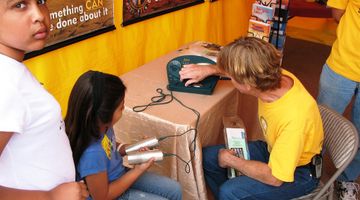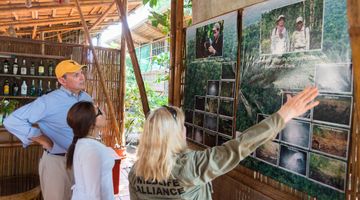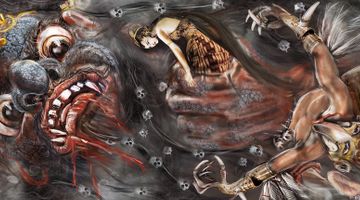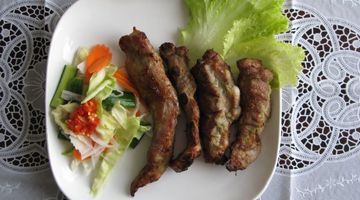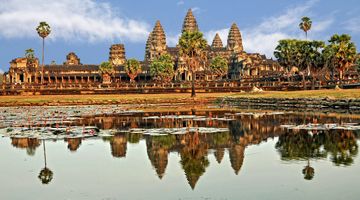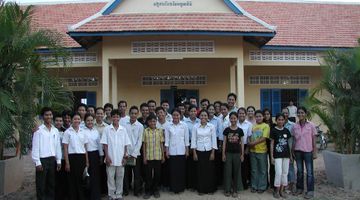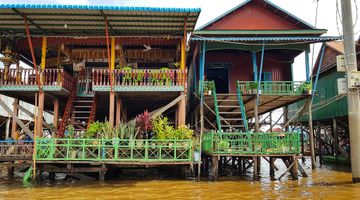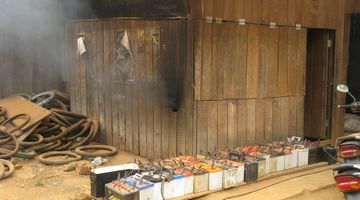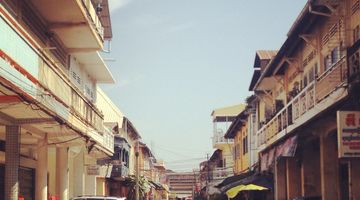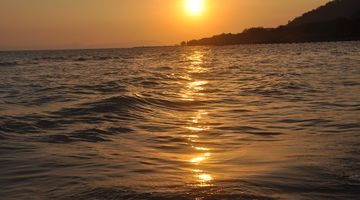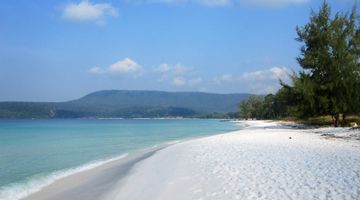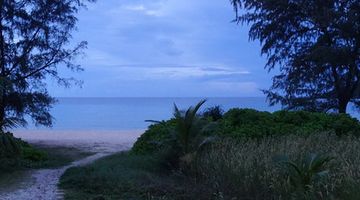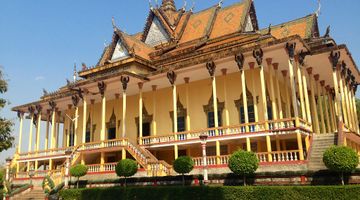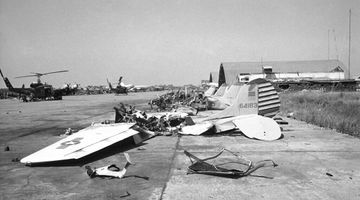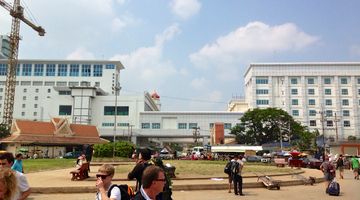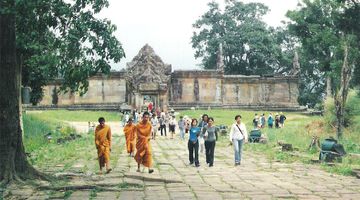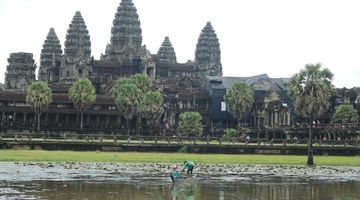Most Colourful Festivals in Cambodia Not to Miss
The Cambodian calendar is packed with festivals and traditional ceremonies throughout the year. Witnessing the cultural celebrations of countries foreign to your own is a fascinating, yet surreal experience. The experience of taking part in one of the religious or cultural ceremonies, or one of the flamboyant celebrations is something that will stick with you – your fondness of it increasing as time progresses. So, read up, and do your very best to plan your trip accordingly.
Cambodian festive calendar
There are many, many festivals that happen throughout the year in Cambodia. For instance, New Years in celebrated up to three times! There is something for everyone here. Whether you are a cultural junkie, or just want to let loose at one of the flamboyant celebrations with people living life in a way so different to your own, make your way to the countries shores! Immediately.
1. Chinese New Year, January–February
One of the first festivals of the year – after the ‘common’ new year, of course, – the Chinese New Year, while celebrated by around 50 per cent of the Cambodian population, is not a public holiday. As a result, the day can be a little under-attended. However, the weeks leading up to the event produce a very tangible sense of excitement as Chinese dragons, lanterns, and red-coloured decorations begin to fill the streets. Those who attend bring food offerings to their ancestors, and hope that it will bring them good fortune. Locals will also often buy a plum blossom sapling for the celebration. The tree’s growth over the year is thought to be indicative of business outcomes for the family.
2. River Festival – mid-March
The River Festival is the newest of all those listed here, it was first held in 2015 only. It happens in mid-March, in one of the north-easterly provinces of the country, Steung Treng. It is the result of a government initiative to grow the economy of the area. The festival is largely about sports, and boy, will you be tired come the end of the day. Embody your inner Action Man and get involved with some traditional boxing. Of course, then you must do some wrestling. Maybe a little boat racing afterward? The river festival is not for the faint hearted or weak! This is not a direct challenge for you to prove yourself! You should do whatever it is that will make you happy on your holiday, and it’s completely fine if one of those things is getting sweaty.
3. Khmer New Year, or Choul Chhnam Khmer: April 14-16
During the Khmer New Year, a very spiritual and traditional affair, the country comes to standstill. Business is halted, the streets are filled with people, and the attention of the country is directed solely toward to the events of the New Year.
The celebrations of Choul Chhnam Khmer go on for three full days. The first day is called Moha Songkran. During the first day, every home welcomes the new God into their homes by laying out a table full of fruit, candles, flowers and incense sticks. The houses, and the people within them, are incredibly decorated and are made to look their most appealing. People sit together and pray for happiness and success on this day.
The second day of the festival is called Wanabat. It is the day of giving. Grandparents are given gifts from parents, and parents are given gifts from their children. Poor people are given clothes and food. In the evening, monks are asked to give a blessing to the people.
The third day is called Tanai Lieang Saka, which directly translated to the day of new beginning. It the most jovial of three days. In the afternoon, traditional games are played and the feeling of hope, as well as gratefulness seems to fill the hearts of the people. Get involved in a game of tug-of-war, trot dancing, or a game of hand-scarf throwing! Expect incredible scenes of splashing water, clouds of flour, ear-to-ear smiles, and a renewed sense of hope for the year ahead.
Things get a little messy as people begin to pour and throw water on one another. Splashes of water, belly-deep laughs, squinting eyes, and faces of incredulous disbelief characterise the events of ther afternoon. The younger and more excitable throw flour and baby powder on each other, which, as you can imagine, takes things to a whole new level.
The celebration is one of great significance for the people of Cambodia. The opportunity to be a part of it should be relished, approached with respect, and seized with both hands! The celebration happens all over the country, but may be best celebrated in Phnom Penh.
4. Royal Ploughing Day: May 14
Royal Ploughing Day marks the beginning of the rainy season, and the beginning of the rice growing season in Cambodia. It is the time to make important predictions about the upcoming agricultural season. The ceremony has been observed for centuries in Cambodia, and is replicated in several other counties in Southeast Asia. In Cambodia, the ceremony is always in Phnom Penh. The ceremony is one of great importance in terms of the people’s belief in, and approach toward the events of the forthcoming season.
Two royal oxen are offered seven plates of food that include rice, corn, sesame, water, rice whiskey, green beans and freshly-cut grass. Depending on what the Oxen eat, predictions are made about weather, epidemics, and the farming conditions of the upcoming season. These predictions are taken very seriously, staunchly upheld by all members of the farming community.
The ceremony is very jovial though, and is not the reflective affair you may think. Thousands of people in exquisite cultural attire first parade, then sing and dance and bear witness to the event. Farmers bring their best products to the market, which makes for quite the special selection of grains and vegetables.
5. Ancestors’ Day, or Pchum Ben Day – September 19–21
Pchum Ben is a festival of tremendous spiritual and religious significance. Thousands of locals gather around nearby pagodas to make offerings to their deceased relatives.
Pchum Ben is about showing your love for relatives for have passed. The underlying belief is that one’s deceased relatives can have a pretty tough time in the afterlife should they not make it into Heaven, Nirvana, or Elysium (whichever name you give it). In fact, they have no view of the sun, and no food to eat but they can make temporary visits to the material world on this day. Hence, the locals bring offerings to their loved ones passed, providing temporary relief from the eternal damning from which they suffer.
This festival does not have balloons, people dancing, or children with painted faces. It is rather a sombre, reflective event – one that should be witnessed respectfully from the vantage point of a traveller.
6. Commemoration Day of King Norodom Sihanouk: October 15
On the commemoration day of King Sihanouk the revered king is paid respect for the impact that he has had on the country. The celebration often coincides with the Water Festival, which is, in part, the reason for the immense celebration that occurs over the three days. So, between the fireworks, boat races, shows, dances, and all the other activities around the Tonle Sap river and the Royal Palace, take a moment to appreciate how the events of the past, and this very man in particular, have enabled the current moment to be exist.
7. Water Festival, or Bon Om Touk: October–November
The Water Festival is easily one of the most attractive festivals to foreigners. Between the marvellous array of activities, food and moments of celebration, it isn’t difficult to understand why. Millions of people flock to Phnom Penh for this event, it is one of the most important celebrations in the Cambodian calendar.
The festival marks the turning of the flow of the water between the Tonle Sap and Mekong rivers, the beginning of the fishing season, and the end of the rainy season. It is an opportunity to give thanks to the rivers as they provide the area with fertile farming land and contribute a staggering percentage toward the countries in-land fisheries catch. Its annual ebb and flow supports virtually the entire inland fishing industry, as well as the vast array of locals that are, in some way, financially dependent on the Tonle Sap lake.
The highlight of the festival is the annual boat race. Over 400 boats, propelled by an uncountable amount of impressive oarsmen race down the river. The banks erupt in support, making this little spot on earth one of the best places to be for just a few minutes.
The event goes on for three days, mind, day and night! By night, the sky and river are illuminated by fireworks and brightly lit-boats that float beneath the ambient light of the full moon. The festival happens in the very early days on November, or the late days of October, so be sure to be in the area if you’re in the country around these dates!
8. Independence Day: November 9
Seeing as Cambodia gained its independence from France just in 1953, the spirit inherent in the celebrations of Independence Day is so very lively. Cambodian flags adorn houses across the country, warm and accepting smiles are fixed to the faces of locals, and tremendously flamboyant celebrations fill the space around you, leaving you with a childlike fullness in your heart and wonder in your eyes. Independence Day is a celebration asserting the value and beauty of the country’s people and becoming a sovereign state.
The event is most auspiciously celebrated in Phnom Penh. So, come November 9, you know where you need to be! In the morning, outside the Independence Monument, the festival is in full-swing. A parade of floats and marching bands follows, making its way past the Royal Palace. Colours, music and incredible smells fill the air. Come evening time, the Royal palace is illuminated, and a show of fireworks sprouts from the riverbanks.
The day, overall, is one of great patriotism, humility and happiness and will go one in your memory as fantastic moment in time. If you can, make your way to Phnom Penh for the best possible experience for this time of year.
9. Sea Festival – December 31
The Sea Festival is an exciting way to bring in the new year in Cambodia – the universal new year that is, on the 31st of December. In any of the areas that line that west coast, Koh Kong, Sihanoukville, Kampot and Kep, you will find celebrations linked to the festival. However, Sihanoukville is the most popular, with around 50, 000 folk with some disposable income sports, and cultural events keep the masses entertained until the brilliant countdown to bring in the New Year.
The events start at dawn and carry on until the same time the next day. Among the sport events that’ll keep you running from one to the next is Cambodian martial arts, beach volleyball, a motorboat race, and even a half-marathon. Bring your sunscreen, a hat, maybe a little neon paint, and get jovial!
